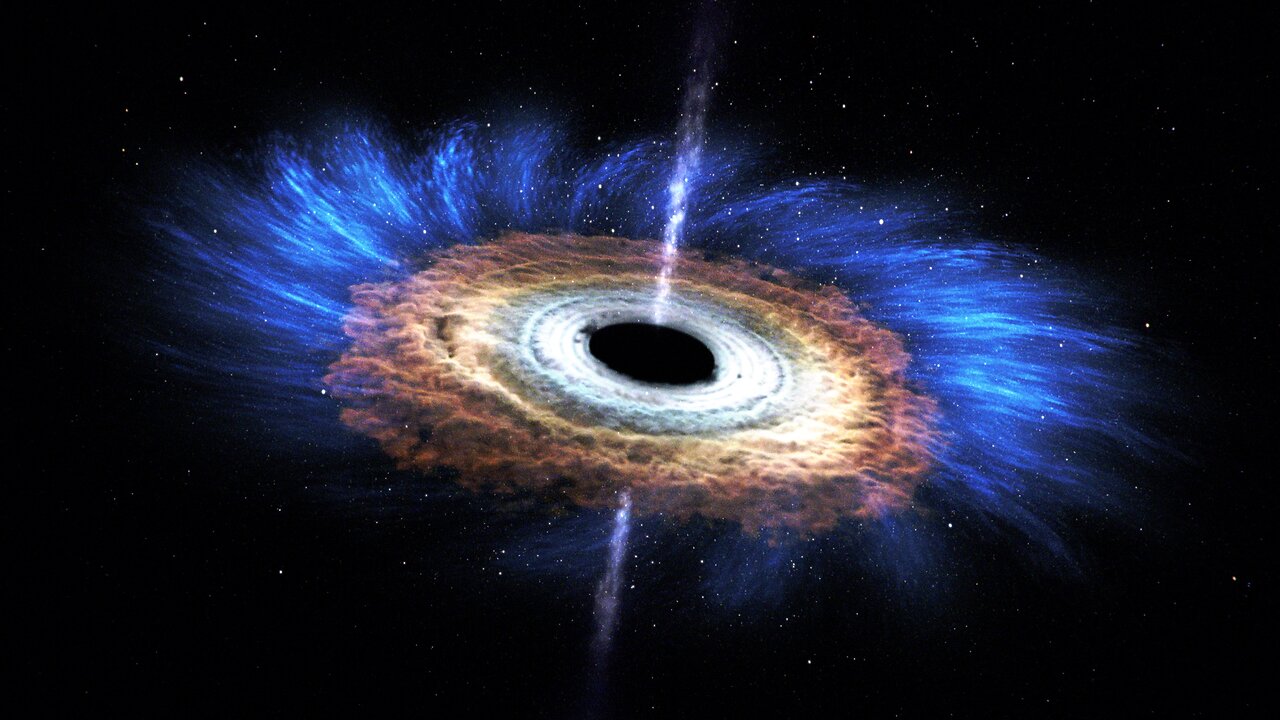Premium Only Content

Cosmic Drama Unveiled: When Black Holes Shred Stars
In this visual representation, we explore a remarkable cosmic phenomenon: when a star ventures too close to a black hole, the gravitational forces at play are so powerful that they tear the star apart. This extraordinary event, known as a "tidal disruption," unfolds in a dramatic manner. As the star gets too close to the black hole, it undergoes a process where some of its shattered remains are catapulted outward at incredibly high speeds, while the rest gets inexorably drawn towards the insatiable gravitational pull of the black hole. This dynamic interaction results in a unique X-ray flare that can persist for several years.
To unravel the mysteries surrounding such events, NASA's Chandra X-ray Observatory, the Swift Gamma-ray Burst Explorer, and ESA/NASA's XMM-Newton spacecraft have come together, each contributing essential pieces to the cosmic puzzle. Their combined efforts shed light on a particular tidal disruption event called ASASSN-14li. This event was initially discovered through an optical survey conducted by the All-Sky Automated Survey for Supernovae (ASAS-SN) back in November 2014. ASASSN-14li unfolded in the vicinity of a supermassive black hole, which is estimated to possess a mass several million times greater than that of our Sun. This cosmic drama played out within the heart of PGC 043234, a distant galaxy located approximately 290 million light-years away.
Astronomers are eagerly searching for more occurrences akin to ASASSN-14li. These events serve as critical testing grounds for theoretical models, allowing scientists to gain deeper insights into how black holes influence their surrounding environments.
During the course of a tidal disruption event, slender strands containing a significant portion of the star's mass plunge toward the black hole. Over time, these gaseous strands converge into a seamless, scorching-hot disk that radiates with intense X-rays. As this disk takes shape, its central region becomes extraordinarily heated, leading to the emergence of a powerful outflow of material known as a "wind," which streams away from the disk.
Credits
NASA's Goddard Space Flight Center.
Brian Monroe (USRA): Lead Animator
Scott Wiessinger (USRA): Lead Producer
Francis Reddy (Syneren Technologies): Lead Writer
Jon Miller (University of Michigan): Lead Scientist
-
 LIVE
LIVE
Badlands Media
7 hours agoDevolution Power Hour Ep. 402
7,542 watching -
 LIVE
LIVE
Inverted World Live
5 hours agoUFO Seen Over Tokyo During Trump Visit | Ep. 132
2,652 watching -
 2:54:08
2:54:08
TimcastIRL
4 hours agoDemocrat FEDERALLY INDICTED For Obstructing ICE Agents In Chicago | Timcast IRL
181K80 -
 LIVE
LIVE
SpartakusLIVE
5 hours agoNEW - REDSEC Battle Royale || The Duke of Nuke CONQUERS ALL
318 watching -
 LIVE
LIVE
PandaSub2000
1 day agoLIVE 10:30pm ET | NINTENDO DS Night
216 watching -
 LIVE
LIVE
Alex Zedra
2 hours agoLIVE! Battlefield RecSec
275 watching -
 1:26:50
1:26:50
The Quartering
4 hours agoErika Kirk Threatened, SNAP Riots Near, & New AstroTurfed Woke Lib Influencer
30.6K17 -
 29:24
29:24
Glenn Greenwald
5 hours agoSen. Rand Paul on Venezuela Regime Change, the New War on Drugs, MAGA Rifts, and Attacks from Trump | SYSTEM UPDATE #539
100K101 -
 1:45:39
1:45:39
Badlands Media
17 hours agoAltered State S4 Ep. 3
40.8K24 -
 LIVE
LIVE
This is the Ray Gaming
2 hours ago $0.01 earnedRedacted Sector Day 2 | Rumble Premium Creator
111 watching